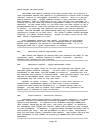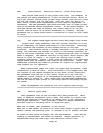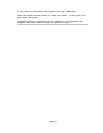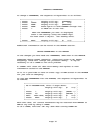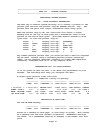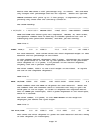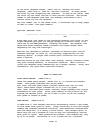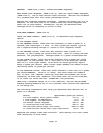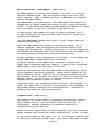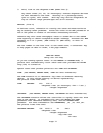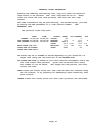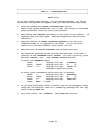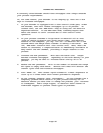If the first dispense weight, (data line 3), matches the final
dispense, (data line 1), then no "retries" occurred. In other words,
the first try was accepted by the software. If they do not match, then
the first try was short and one or more retries occurred. The second
number is the dispense time that the software calculated to be a
correct first try for the dispense.
The last number (22) is the CYCLE count, a convenient way to keep pages
of data in order, like page numbers.
Optional "BAILOUT" line:
------------ ------------ ------------ ------------ ------
232
A 4th data line (not shown in the beginning example) will print if any
single dispense goes past its target weight by a certain value, this
value set by the BER parameter, normally 200 grams. The example line
shown here would indicate COLOR overshoot the target weight after
dispensing for only 232 interrupts.
Bailouts are designed to prevent overflows of material when initial
software settings, at start up, are entirely inappropriate for the
metering device. A larger then normal error correction will occur
after a bailout.
Bailouts errors at any time other then startup, usually indicate either
very poor flowing material, or excessive vibration. When a bailout
occurs the dispense stops immediately for a weight reading. Using this
information, the cycle then continues normally.
WHAT TO CHECK FOR.
TOTAL BATCH WEIGHT: (DATA line 1)
Check the TOTAL batch weight, (DATA line 3), to confirm the blender
model. 2000 grams indicates 200 series model.
400, 1000, and 2000 gram totals indicate models that use 3 K load
cells, which means output information is in 1/10's of grams.
4000, 9000, and 18000 gram totals indicate larger blenders that report
information in full grams. Since some numbers in the printout do not
include the decimal point, you will want to know if you are reading
full grams or tenths of grams.
TARE WEIGHT. (DATA line 2)
In DATA line 2, tear weights should be consistently within a few grams
of each other from cycle to cycle. Large variations in the tare weight
numbers may indicate excessive vibration, some mechanical interference
with the weigh bin, or a faulty circuit board. Tare weights above or
below zero are not a problem as long as they are consistently similar
from cycle to cycle. When problems are present, tare numbers may vary
by up to 50 grams. Variations of 2 or 3 grams are not a problem.
Page 73



